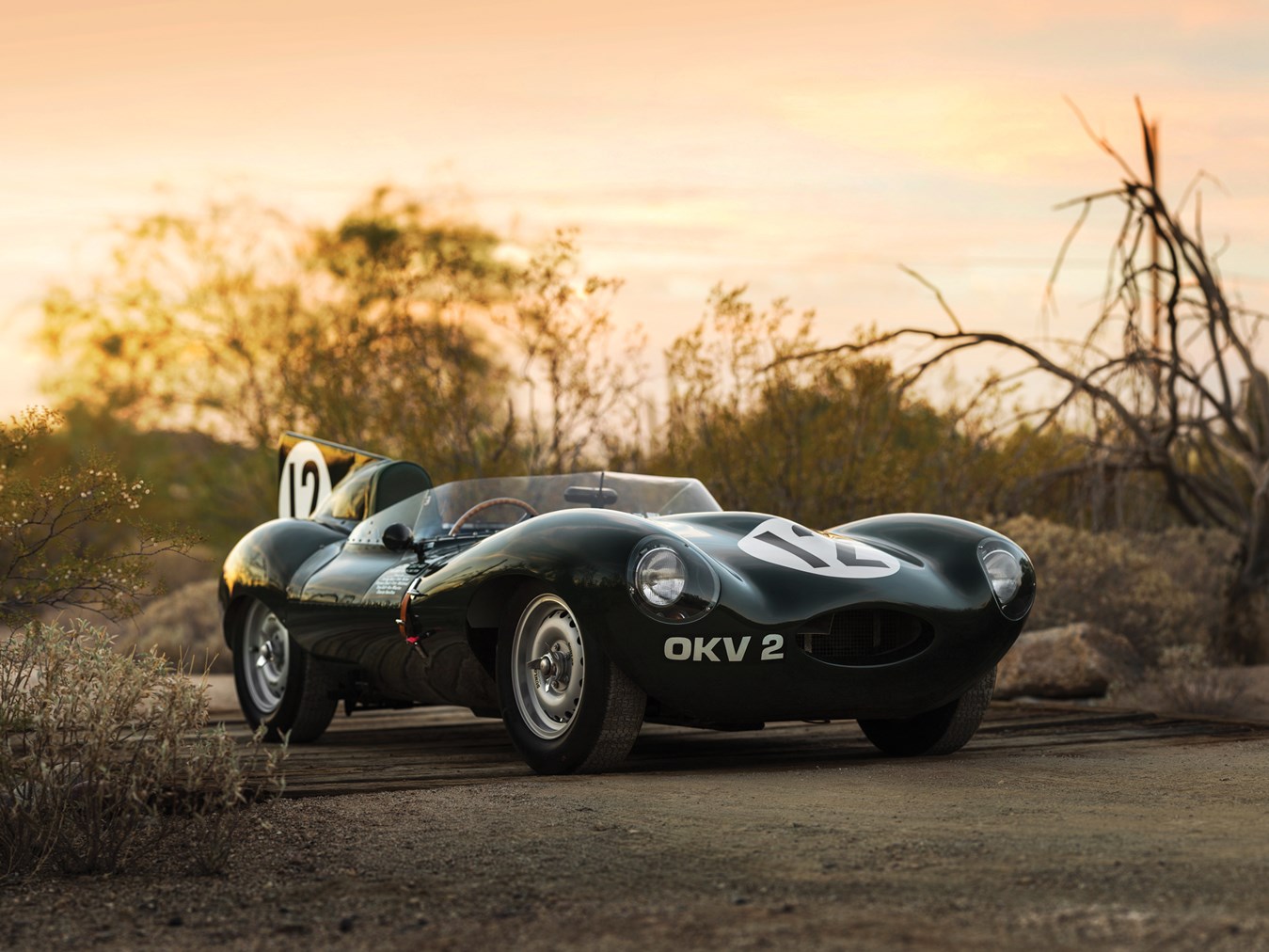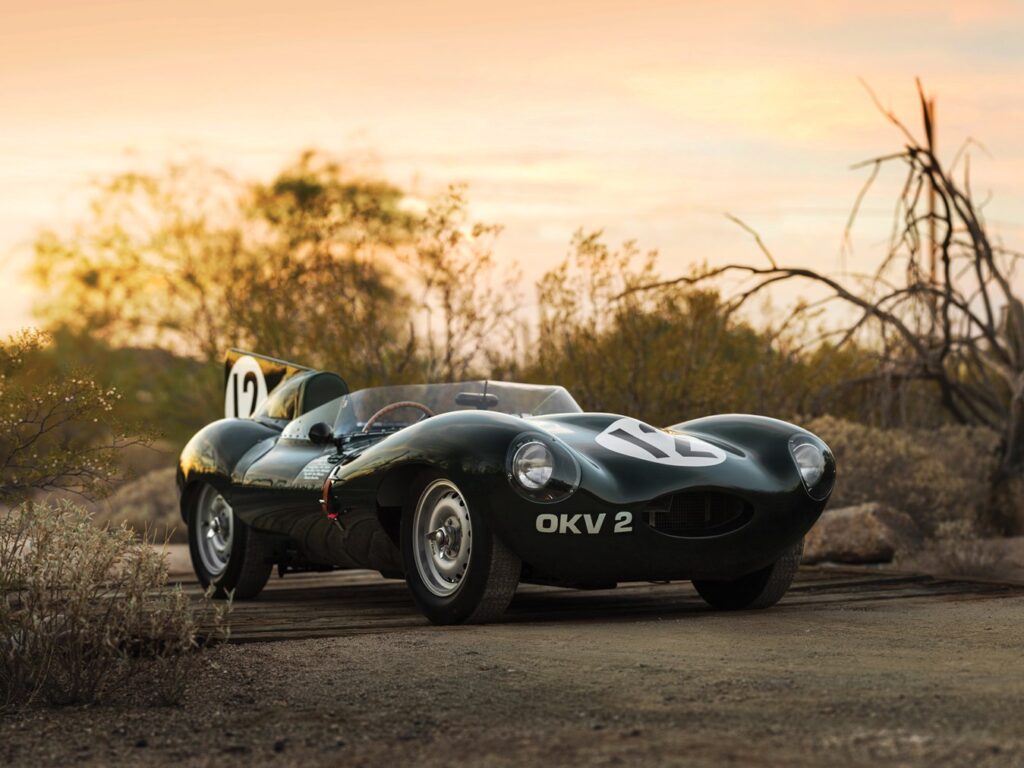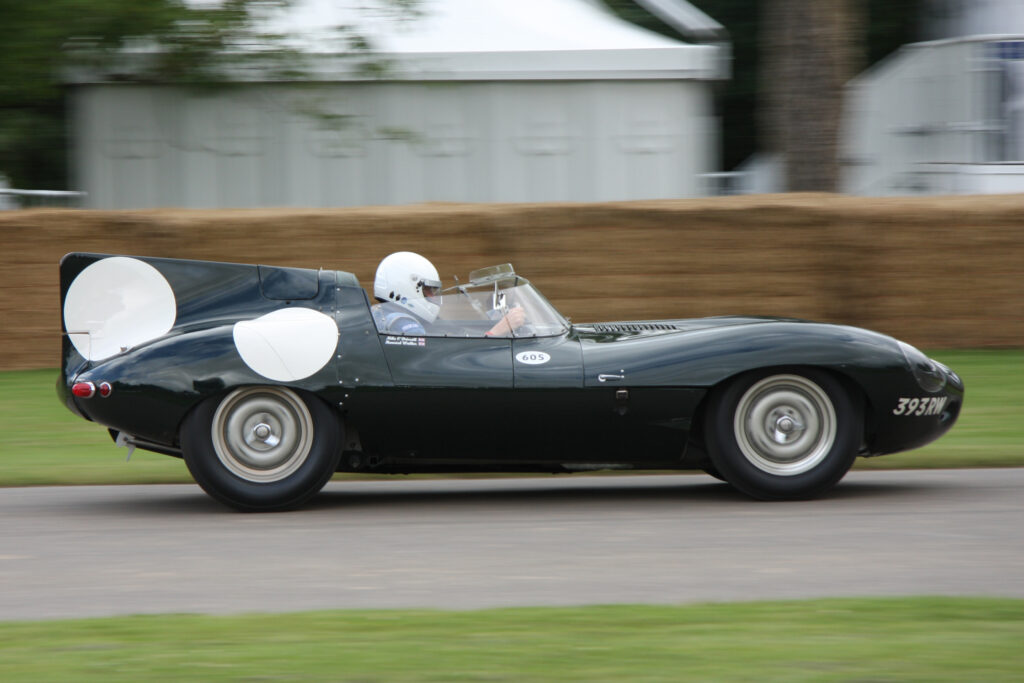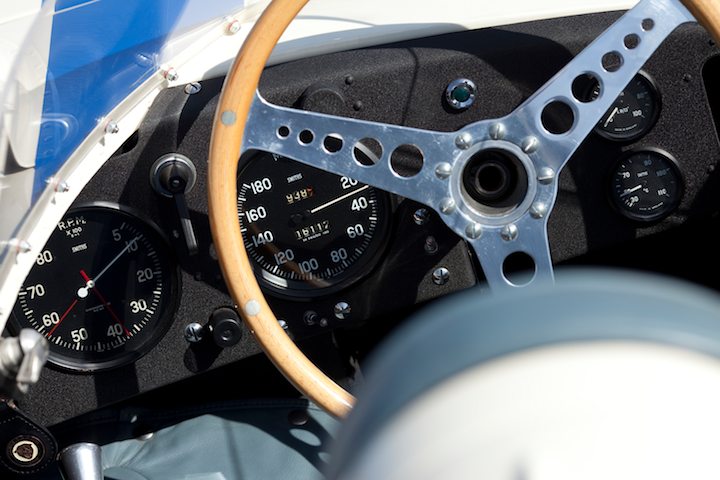
In February 2018, Jaguar announced that they were going to build 25 ‘new original’ Jaguar D-Types. The car’s specification would be exactly the same as when the original D-Type was launched in 1954.

Prior to the release in 1954, Jaguar’s objective was to design a sports car that could win the Le Mans 24-hour endurance race. The sleek, aerodynamic body design was revolutionary, with Jaguar’s Technical Director and Chief Engineer, William Heynes, drawing on aviation engineering. He worked closely with Malcolm Sayer, who had also been involved with the design of the C-Type. The aim was simple. They wanted to create a sports car that cut through the air like a hot knife through butter, reducing drag and improving the efficiency.
Many mechanical features of the D-Type were taken from the C-Type including the straight-6 XK engine.
Between 1954 and 1957, Jaguar is believed to have built 18 factory team cars, 53 for customers, and 16 XKSS versions. In July 2008, a first factory production D-Type was sold at Bonhams auction for £2,201,500. Incredibly, the 1956 Le Mans-winning 1955 Jaguar D-Type sold for $21,780,000 at RM Sotheby’s Monterey 2016.

The Jaguar D-Type was a racing success, securing three consecutive victories at Le Mans in 1955, 1956 and 1957. Only in 1958, when Le Mans limited the engine size for sports racing cars to 3.0 L could the D-Type be caught and beaten. The 3.4 L engine, followed by the 3.8 L in 1957, produced power that no other sports car could match.
In 1955, Mike Hawthorn and Ivor Bueb guided the D-Type to victory in a race marred by one of the most terrible motor racing accidents in history. Mercedes driver Pierre Levegh and more than 80 spectators lost their lives when the car launched into the air, crashing into a retaining wall, disintegrating and scattering debris into the crowd.
The 1956 Le Mans race was won by a D-Type, but driven by the Ecurie Ecosse team and not the Jaguar factory entry. Ron Flockhart and Ninian Sanderson beat off strong competition from Aston Martin and Ferrari.
Ironically, the D-Type’s most successful year came after Jaguar had withdrawn from motorsport at the end of 1956. In the 1957 Le Mans race, five of the top six places featured D-Types with Ecurie Ecosse finishing 1st and 2nd.
The XKSS evolved from the ashes of the D-Type, with road-going additions such as a passenger seat and door, side windows, full-width windscreen and wipers, trimmed interior, folding hood, and bumpers. The ‘new’ XKSS was suddenly eligible for production sports car races in the USA. However, disaster struck on the evening of 12th February 1957 when a fire broke out in the plant, destroying nine of the 25 cars in production and ended production of the XKSS.
SMITHS Instruments have always had a strong association with Jaguar and it was not surprising that they designed and manufactured the speedometer, tachometer and other gauges. Racing models only had tachometer, temperature and pressure gauges, mounted to the left and right of the steering wheel. The speedometer was an addition, positioned centrally behind the steering wheel.

The Jaguar D-Type was very special and the ‘new original’ D-Type brings this classic racing car back to life.
For further information on SMITHS gauges for classic Jaguar cars, please contact us on:
Email: [email protected]
Phone: +44 (0) 1639 732200
You can also follow us on social media including Facebook (@caigauge) and Twitter (@caigauge) for regular news and technical features.